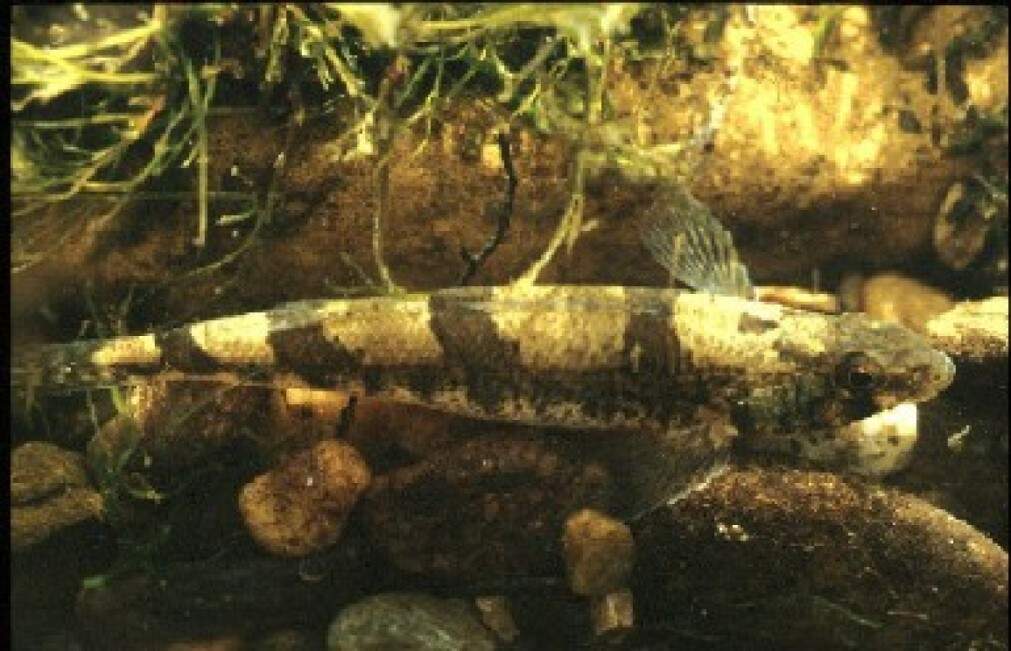Advertisement
Commentary
The Endangered Species Act, like the plants and animals it protects, is in danger of extinction

Fifty years ago last week, President Richard Nixon signed the Endangered Species Act of 1973, a conservation law that quickly became one of the most politically attacked of all time.
A few months later, my students and I at the University of Tennessee Law School launched a lawsuit under the ESA, the first big test of the new law. We were trying to save a little fish, the snail darter, which was known to live only in a single place: the Little Tennessee River. The Tennessee Valley Authority had proposed a dam that would threaten the fish's last natural habitat.
After 68 dams had been built on that river system, the snail darter lived in the last remaining 33 miles of cool, clear, flowing waters in the Little Tennessee River. The clear waters that flowed from the Smoky Mountains drew trout fishermen and families on canoe trips past historic Cherokee village sites, and the rich farmlands of 300 local families.
For six years, we carried our case through a fog of rancid national debate and finally, to a landmark victory in the U.S. Supreme Court. The court ruled that the new law gave endangered species very high priority, requiring critical consideration.
Why is this fish story important? Because today, the ESA — which has restored the bald eagle, the peregrine falcon and the humpback whale, among other species — is endangered. Even as the nation celebrated the law's 50th anniversary, 51 congressional bills seek to undercut or abolish the ESA's protections. Those bills paint the law as one more excessive and unjustified governmental invasion of state and corporate economic interests.
This argument isn't new. In the 1970s, opponents framed our snail darter as a rather silly little endangered fish that radical eco-extreme environmentalists were using to halt human progress, by blocking a gigantic Tennessee Valley Authority hydroelectric dam.

That storyline was enthusiastically picked up by industry lobbyists and pork-barrel politicians to undercut the ESA and other public interest regulatory statutes. “Snail darter” became a catchword for the anti-government, laissez-faire movement that ultimately has become dominant in today’s politics.
“The Snail Darter has sort of become the shorthand for over-regulation in this country,” Rep. Devin Nunes, (R-CA) said decades later.
The frustrating thing about all this is that this framing of the story was completely wrong — except that the fish, just 3 inches, was indeed very small.
There was no big hydroelectric dam being stopped by a little fish, except in the skewed whirl of national media commentary and anti-regulatory politics. Tellico Dam would be a very small dam in soft rolling farmland, unjustifiable for hydro generation.
In reality, it had been designed for recreation and a proposed federal town that would never be built. Most of the farmland was condemned for real estate development, not for the lake.
And what about us “eco-extremists” who misused the ESA to block the giant dam? It was the expropriated farmers of the Little Tennessee River valley who were the primary block of citizen opposition to the Tellico project. It was Tennessee farmers and fishermen that my students and I were primarily representing — in the courts, in the halls of Congress, and ultimately, in a presidential-level economic inquisition — as they gambled that the little fish would be able to save their family farms and the flowing river.

Like most endangered species, by its endangered survival in this last place, the darter was a canary in a coal mine. Like the little birds carried down deep by miners to warn of poisonous methane gas undetectable by humans, it warned of what losses humans too would suffer if this last place was dammed into one more final sluggish impoundment. If the sensitive little fish faced death, we, too, faced serious threat.
Unlike the Clean Air Act, the Clean Water Act and the toxic substances laws — difficult to attack politically because they so directly protect human welfare — it's less clear to the public how the Endangered Species Act helps humans. But it does. Because the overwhelmingly common cause of species threat is habitat contamination or habitat disruption, endangered species almost always reflect harmful impacts upon humans as well.
After our Supreme Court victory, Congress ordered a cabinet-level economic inquest before the so-called “God Committee,” which would decide whether the Tellico Dam, and other projects, should be exempt from the ESA. The committee ruled unanimously against the dam, saying it would destroy more economic value than it could ever create.
But eventually, after three battles in Congress, the pork barrel overrode the Supreme Court and the economic verdict. The dam won, the river died.
The snail darter survived only because some were transplanted into nearby rivers. But the transplanted darters will require human support, with oxygen and maintained artificial water flows, forever.
It’s a torturously complex story. But if the media finally gets it right, the darter saga can powerfully support the continuation, and strengthening, of the ESA.
